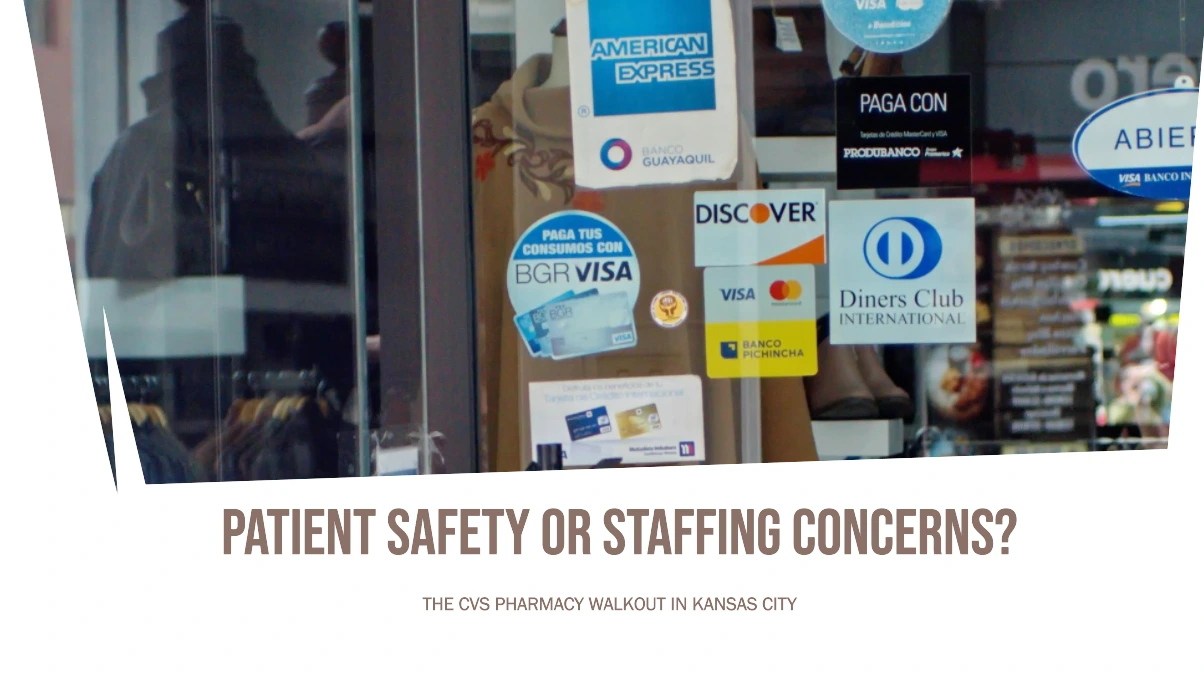The healthcare industry is no stranger to challenges, but when the safety of patients is at stake, healthcare professionals are compelled to take action. In late September 2023, CVS Pharmacy witnessed a significant event in the Kansas City Metropolitan Area—a walkout by pharmacists and staff. This protest shed light on the delicate balance between patient safety and staffing concerns that has been an ongoing issue in the industry.
The CVS Pharmacy Walkout: An Overview
Key Details of the CVS Pharmacy Walkout
| Date | Reasons | Impact | National Concerns |
| Late Sept 2023 | Unsafe working conditions, inadequate staffing | Temporary closures of CVS Pharmacy locations | Ongoing challenges in the industry |
Unsafe Working Conditions and Staffing Woes
The CVS Pharmacy walkout was not an isolated incident but rather a culmination of years of concerns voiced by pharmacists across the country. Pharmacists, who are at the forefront of patient care, found themselves grappling with staffing levels that did not align with the increasing demands of their roles.
One of the core issues raised during the walkout was unsafe working conditions. Pharmacists argued that the existing staffing levels made it difficult for them to provide quality care to patients. With mounting workloads and limited support, concerns about patient safety became a paramount issue.
Impact on CVS Pharmacy Locations
Impact of the CVS Pharmacy Walkout
| Location | Temporary Closures | Ongoing Concerns |
| Kansas City Metro Area | More than a dozen locations | Patient safety, staffing |
The walkout had a direct impact on CVS Pharmacy locations in the Kansas City metro area. More than a dozen locations had to temporarily close their doors as pharmacists refused to work under the existing conditions. This move was a clear message that pharmacists were willing to take a stand to ensure their concerns were addressed.
However, it’s essential to note that despite the walkout, most Kansas City CVS pharmacies remained open, emphasizing the complexity of the situation. Pharmacists were committed to patient care but demanded better working conditions to provide it.
National Concerns and Industry Challenges
The CVS Pharmacy walkout in Kansas City was not an isolated incident. It was part of a broader, national concern regarding the working conditions for retail pharmacists. Pharmacists across the country had been raising their voices against understaffing and the impact it had on their ability to ensure patient safety.
Ongoing Industry Challenges
| Concerns | Impact | Actions Taken |
| Understaffing | Patient safety, pharmacist well-being | Walkouts, protests, advocacy |
| Workload Pressure | Quality of care, burnout | Calls for industry reforms |
| Patient Safety | Medication errors, adverse events | Calls for improved regulations |
Pharmacists, as the medication experts on the healthcare team, play a crucial role in ensuring the safe and effective use of medications. However, they have faced workload pressure that often leads to burnout. This not only affects the quality of care they provide but also raises concerns about patient safety due to the increased risk of medication errors and adverse events.
The Path Forward: Addressing Concerns
The CVS Pharmacy walkout in the Kansas City Metropolitan Area serves as a stark reminder of the challenges faced by healthcare professionals. It underscores the importance of addressing concerns related to staffing levels and workload pressure to ensure patient safety and pharmacist well-being.
As the healthcare industry continues to evolve, it is crucial for stakeholders to come together and find sustainable solutions to these challenges. Advocacy, reforms, and improved regulations are essential steps towards creating a healthcare environment where patient safety remains paramount, and healthcare professionals can perform their roles effectively.
In conclusion, the CVS Pharmacy walkout in Kansas City was not just an event but a reflection of the broader issues plaguing the healthcare industry. Pharmacists and staff took a stand for patient safety and better working conditions, reminding us all that healthcare is a shared responsibility. The path forward lies in collaborative efforts to address these concerns and create a safer, more supportive healthcare environment.
Note: This blog post may contain inaccurate content and is for illustrative purposes only. Please check other sources for updated information.
